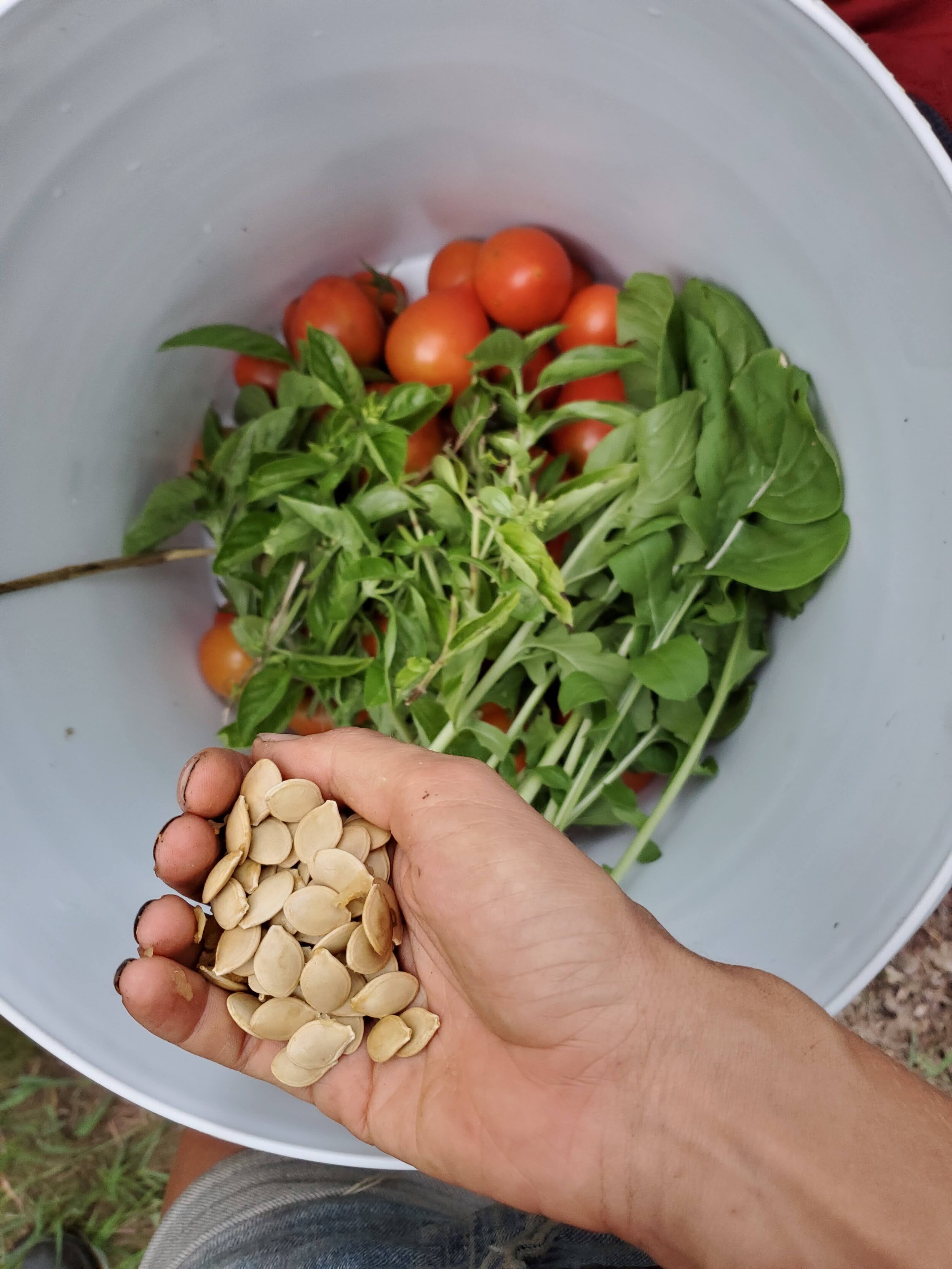
In the spring of 2021, as grocery stores ran empty while the world shut down due to Covid, we designed a 500 sqft garden.
In the beginning….we experienced many failures. From inadequate water access, to inadequate fences, we went through 3 seasons before re-starting with better infrastructure.
Learning from our mistakes, we were able to grow hundreds of pounds of zucchini and butternut and acorn squash. We also grew tomatoes, corn, Swiss chard, arugula, and herbs like cilantro, basil, and edibles flowers like borage.
To help us figure out how exact measurements would fit into our limited space, we used Sketchup, a free design program to first envision and plan the layout.
To line the 270 ft perimeter of the beds without spending a fortune, we cut up old metal roofing which we salvaged for free.
The most time consuming part was filtering the compost from debris and large chunks. As it was really affordable we decided it was worth it to spend the time instead of the money.
As we are mostly sand soil we imported compost made from local schools using Bobcat Blend and spent mushroom compost from a local company, mixed it with our sand, some clay, and alpaca pellets as fertilizer from a neighbor.
We used straw to cover the soil, helping to keep it moist and protected from deterioration from the sun, and washout from hard rains. We used free woodchips in the pathways from the city waste recyclers or Craigslist.
The most expensive part was running irrigation, allowing us to ensure the garden gets water as we juggle the many other aspects of building a community.
Using buckwheat as a cover crop helped to keep our soil moist and cool, protecting it from harsh sunlight and erosion from strong wind or rain. In addition, it seemed to help distract pests from our staple crops, while providing beneficial pollinators plenty of flower food. We even noticed it provided structural support for our young tomato plants from blowing over in the wind. Buckwheat has an edible seed used in cereals and flour.
Clover is another cover crop we tried to use, as it has the benefit of fixing nitrogen naturally. However, the buckwheat overtook it. In the future we would use them separately or in different seasons.













